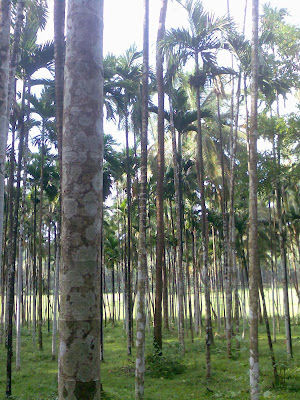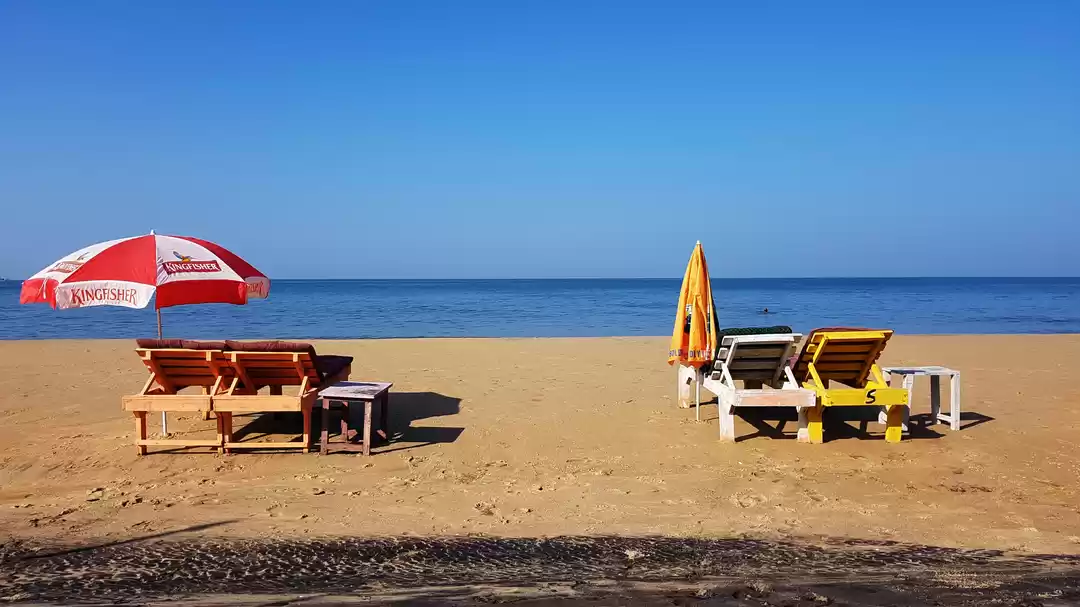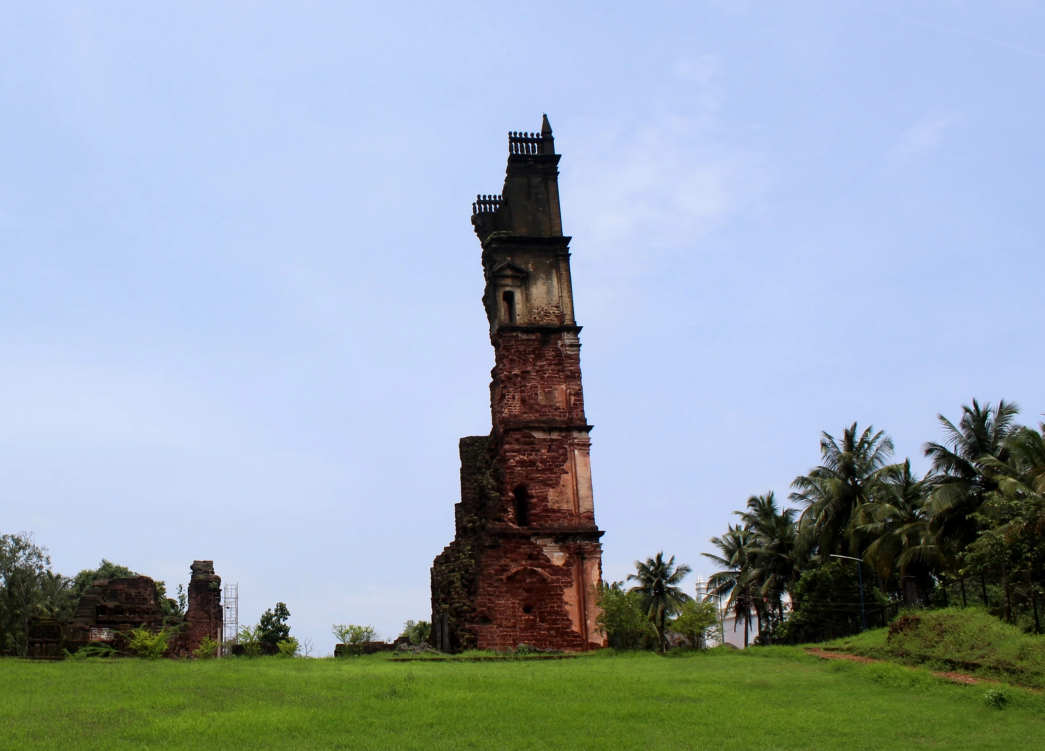It was a bright and sunny Sunday afternoon when I met my friend Megha for lunch. I was prepared for this meeting since I had lot things to talk about. Megha being a literature teacher usually has something to say about whatever you bring up and hence it always becomes an interesting discussion about all kinds of random topics.
We were going to visit the Saptakoteshwar temple that day. This temple has a lot of history associated with it and we wanted to visit the temple and places near it to get an idea of what the temple might have witnessed through the centuries.
I had my scooter with me then and we first head to the ferry that would take us to Chorao island. Chorao island was where this temple was initially located, before the Portugese and before the time of Shivaji. We got on the ferry along with the scooter and crossed the Mandovi river to reach a spot on the island amongst the mangrove forests that seemed envelope the entire mass of land.
We started riding on the only road before us that took us through the never ending fields on either sides. The tiny hills in the distance were very reassuring about how we were now pleasantly disconnected from the city we came from. It was not long, before we approached a small church. Although it seemed like it was built using concrete, there was no way to tell how old it was. There was no sign of a year mentioned anywhere. As we walked out of the gate of the church without finding anything, we saw a tall structure in front of us. It was what it looked like a portion of a cross. A tall vertical section made of wood, standing on an elevated pedestal. There were symbols engraved in the front and the back. Some were easy to identify, a ladder, a crop and a bell. But the others, we were not sure what they meant.

Then we were on our way again, through the interiors of the land. Now we were passing through a growth of trees all around, interspaced only by pretty houses with tiled roofs and brightly painted walls. As we went watching the intricate details on their windows and their inviting verandas, we reached another church. This church was bright white in colour with a huge lawn in front of it fenced by a short wall. As we walked through the lawn, we noticed the growth of touch-me-not plants among the grass.
We could not see or find anything of historical importance here except for a small canon facing outward as if protecting the church from its enemies.
Drawn by the curious little houses, we walked down the road in front of the church which was completely covered in shade and so quite that it got us wondering if any people lived in these houses. Just then, I saw this lady looking out from her balcony. She said hi when she noticed that we had seen her. We seized the opportunity to ask her about this place. The lady told us that what we had just visited was a chapel and Chorao church was farther from this place. Megha asked the woman about the markings we saw on the vertical structure in front of the other church. But she had no clue what we were talking about.
Soon we were on our way to Chorao church. It was short ride from where we were. Upon reaching the church, we were looking for clues again. And this church was huge. There were paintings, slabs with names of people who had donated, a stone engraving near the main door, but none of them were showing dates older than the 1900s. We could only speculate if this was where Saptakoteshwar temple once stood.
There was only one way to find out more. And that was to go to the temple itself. We wandered about trying to find the temple. We had entered into a small settlement. There was a small temple there which was kind of incomplete. We payed a visit to this temple and I vaguely remember that the main idol was that of Krishna. Once we came out of this temple, we asked a lady walking down the road how to reach the Saptakoteshwar temple. She could speak English. But she did not know where the temple was. Just then, an old lady came by and she started telling us where to go. But we could not understand a word of what she was saying. Maybe it was konkani she was speaking. Seeing that we weren't able to follow what the old woman was saying, the other lady was trying to translate it for us. I could only appreciate her efforts because we still didn't know where to go from there. After a few moments of failed attempts, a man on a scooter appeared. The old lady stopped him and I guess she asked him where he was going. To our relief, from there, we had to just follow the man to reach the temple. We thanked the two women and went after the man on the scooter.

We followed the man till we reached a point from where we had to keep going straight. When we were passing through the trees and the houses again, suddenly the vegetation changed to a neatly arranged row of thin straight growing palm trees. It looked like a spice plantation. It was amazing to see how slender yet tall these trees can be.
Going further ahead, we saw a temple. At first we thought it was the Saptakoteshwar temple. It turned out to be a devi temple and we learned from a priest that it was a temple built for the God of a family that lives in the region. Hindu families generally have a temple dedicated to their custom God. The main idol was decorated excessively, the priest was doing his rituals and the door into the room where the idol was kept was lit by coloured serial lights. This was the fanciest kind of decor I had ever seen in a temple.
A little further ahead and we reached the Saptakoteshwar temple. Before reaching the main idol, we saw three other idols, each having a small temple of its own. We noticed the architecture of these temples. It made us wonder what might have influenced their unique style. The yellow and blue painted, tile roofed temple was the one that housed the main idol. It even had a tomb at its farther end. What we found inside this building was most unusual. It was a shiv ling ( representation of the Hindu God Shiva) with the face of a mustached man on it. The face was made of metal plate and maybe it was just a mask, but it had strong features.

Reluctant to leave this place without knowing more about it, we asked at one of the houses in front of the temple about who would be able to tell us about the history of this temple. We were asked to visit the person who was in the temple's office room. A flight of stairs took us to a corridor of rooms. This is where we met an old man with a long white beard. When we asked him that we wanted to know about the history of this temple, he invited us into one of the rooms and started telling us about how the temple was initially in Chorao and was moved here when the Portugese had built a church in its place. He mentioned how the ling was used there to reach a well's pulley. He also told us that Jains used to live here when this temple was shifted and that Shivaji had built it in its present form using laterite stones when he noticed that the temple was in a pathetic condition. Megha at this point was curious about knowing how Hinduism, Buddhism and Jainism are related. He didn't have much to say about this and went on to say how it is in Hindu religion itself to not hurt the sentiments of other religions. He claimed that Hindus have never took part in any destruction or killings in the name of religion. Megha told him about the instances where this has happened before and despite being aware of it, he was trying to justify his own point. When I was starting to lose interest in where this discussion was going, he started talking about death and how it is the ultimate form of truth that exists. With this, he lead us to the way out and we thanked him for his time.
On our way back, I reflected upon how all our experiences are so unexpected and how we know so much more about something once we see it from the perspective of a stranger.



































